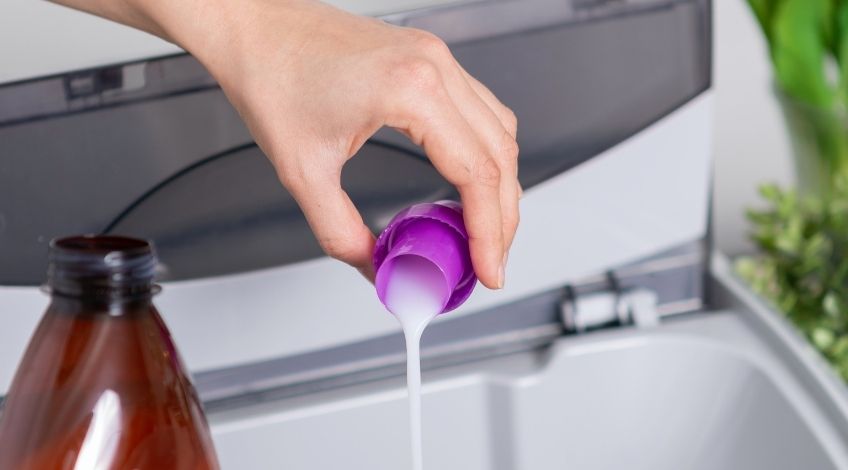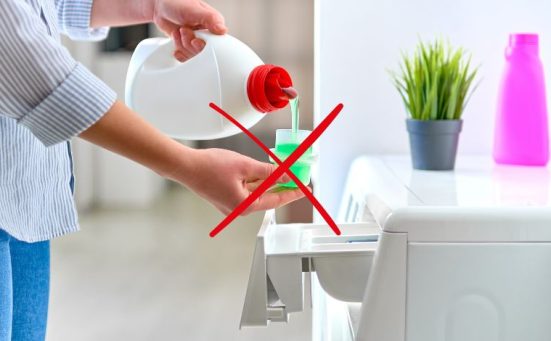
Washing Machine Not Spinning? (here’s why it’s stopped turning)
We take our appliances for granted nowadays, so when one malfunctions it can seem like a really serious problem, especially if it’s your washing machine. You put your dirty laundry into the machine, add detergent and softener, set the program and forget about it. When you return the washing is clean and almost dry, well at least dry enough to transfer to the tumble dryer while you get on with the 1001 other chores that need your attention.
That’s true of pretty much every household and we don’t give our washing machines a second thought, that is until it doesn’t do what’s expected. If for some reason the washing comes out soaking wet you have a problem, but it’s not time to call the repairman yet, there are a few easy fix solutions that could solve this annoying problem. Keep reading and we’ll tell you a few possible reasons that your washing machine won’t spin.
Please note: Never tackle any electrical problems unless you are confident in maintaining your own personal safety and you fully understand what you are doing.
11 Reasons Your Washing Machine Has Stopped Spinning
Apart from the inconvenience caused by your washing machine malfunctioning and you being left with a load of soaking wet laundry. You’re now potentially looking at an extra expense you haven’t catered for. Before calling in a professional, check these 11 simple fixes.
1. Power Supply Interrupted
If there is a power cut in your area this could be enough to disrupt the programming in your machine. Once the power comes back on the machine will need to have the program reset.
2. Using Extension Cables
Extension cables can solve many electrical outlet issues but they can also become the problem. If the cable doesn’t carry sufficient power load, there will be insufficient power to operate the spin cycle.
3. Fuse Blown
If the fuse has blown in your washing machine plug, you could try to replace the fuse, but be aware fuses don’t usually blow for no reason. There might be an electrical fault with your machine. Possibly replace the fuse once and if it blows again, call in an expert.
4. Too Much Detergent

Using the wrong type or using too much detergent can cause the machine to not enter the spin cycle. You need to use automatic washing detergents and check for the correct amount to add for your area. Hard water areas need significantly more detergent than soft water areas. Sometimes the detergent manufacturers change the ingredients and quantity needed, check the packaging for further details.
5. No Spin Cycle Selected
This might sound too good to be true, but this should be the first thing you check for. You would not believe just how many times the no spin or no drain program has been accidentally selected.
6. Too Much Washing In The Machine
If you have crammed too much washing into the machine, it will add water and start the wash cycle. But the machine will not spin, you need to open the door, remove some of the soaking wet washing, and run the spin cycle again. Then after removing the first lot reload the lot you removed and rerun the spin cycle.
7. Load Not Balanced
If you’ve filled the machine with large items of laundry like towels for instance, they could become unbalanced in the drum during the wash cycle. This will result in your machine either not spinning at all, or not spinning enough water out as usual. To remedy this, wash a mixture of items large and small in the same load. This will keep the washing machine’s load evenly balanced.
8. Washing Machine Not Sited Level
Due to the weight and size of the average washing machine, it’s possible it can move across an uneven surface during operation. If you’re in the room and this is the problem, you’ll know soon enough as the machine will be making a serious amount of noise. This is an easy fix, just adjust the feet on the machine until it’s sitting level. The spin cycle should then run as normal.
9. Door Not Fully Shut
This is a problem that affects top loaders predominantly. There’s a switch on the underside of the lid that signals to the machine that the top is shut correctly. If this switch gets bent out of shape, it can prevent the machine from spinning adequately.
10. Drainage Hose Blocked
Washing machines are designed to spin once all excess water has been drained. If the water cannot drain, the spin cycle will not operate. The most common cause of washing machines not draining is a blocked or kinked drainage hose. To solve this inspect the drainage hose to see if it’s kinked at all. If not, remove the hose and check for any obstruction(you can use a plumber’s snake to remove any debris that’s trapped inside the hose).
11. Drainage Pump Filter Blocked
Leading on from the drainage hose, there could be a blockage in the pump filter. This is usually located on the front of the machine housing at the bottom. Open the flap, spread a towel on the floor, place a shallow bowl on the towel and remove the small drainage pipe. Unblock the end of this pipe and drain into the bowl.
You can now remove the filter, which is usually achieved by unscrewing it and then pulling it out. You can then inspect the filter for any foreign bodies, things like; fluff, buttons, coins, screws, nails, pins, bra wire, hair bands or hair pins etc. Also check that the impeller moves freely.
Reset Feature

On many modern machines there is a reset feature which allows you to restart the machine after an error code has been produced that stopped the program. Faults like interrupted power supplies, power spikes and imbalance loads will all cause the machine to stop. Many have a reset button or cycle that can be switched to restart your machine. For those that don’t have a reset button (or mode), the simple act of removing the plug from the power supply will be enough to reset the machine.
Once it has been reconnected to the main power supply, select the necessary cycle (drain or drain and spin or simply spin) and the machine should restart.
Other Possible Problems
That’s 11 reasons your washing machine will not spin that are relatively easy to fix. There are a couple of other reasons why your machine won’t spin, but these should only really be tackled by an expert. But we’ll include them for your information.
- Electrical Fault
Most modern washing machines rely on electrical circuits to run. These can and often do develop faults. If this is the case you’ll need expert help from a qualified engineer. - Drive Belt Is Damaged
This would be obvious from the outset as the drum would not spin at all if the drive belt is damaged. The drive belts wear over time, and can become stretched and eventually snap. If the belt is stretched you will probably find the fault is intermittent, whereas once it snaps the drum will only move if you spin it by hand (which is no good for washing clothes). - Pump Has Stopped Working
If the pump stops running it will prevent the machine from draining any residue water which in turn will prevent the machine from spinning. This entails replacing the pump. - Motor Brushes Worn Out
The brushes connect the washing machine to the washing machine motor, and are in constant contact. Over time these brushes become worn and can wear out. This will allow the machine to fill with water, and drain as usual but the drum will not spin. - Washing Machine Motor Has Burnt Out
If the motor burns out, the drum will not spin, this is not a common problem but it does happen. If the motor is burnt out it will need to be replaced by a qualified engineer unless you feel completely comfortable with taking your machine apart and messing with electrical components.
Frequently Asked Questions
Generally, washing machines will not enter the spin cycle until the water has drained from the machine. If you have excess water in the machine it could be caused by a blockage in the drain hose.
There are a number of reasons that would cause a front load washing machine not to spin, ranging from simple fixes like; drainage hose blockages, pump filter blockages, unbalanced loads, unlevel machines, to broken drive belts, worn brushes, burnt out motors and faulty drainage pumps.
Most modern washing machines have a reset setting that allows you to restart the machine after an error code has stopped the program.
Also, follow us on Pinterest ...



